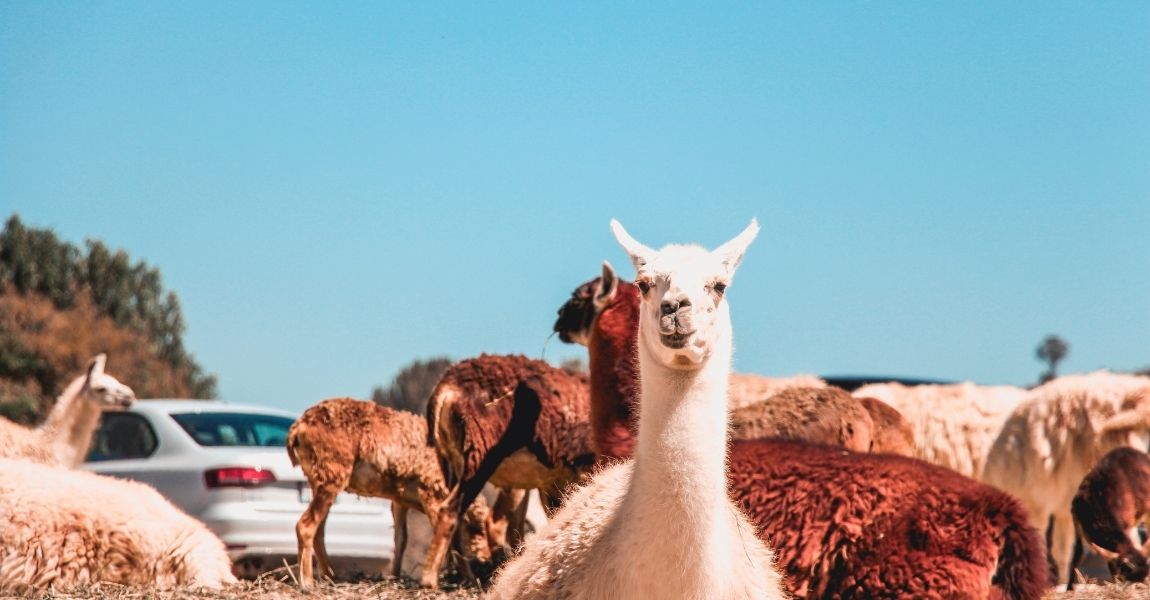Introduction:
Alpacas, with their gentle nature and captivating appearance, have become beloved creatures around the world. These elegant camelids are not only prized for their luxurious fiber but also for their endearing personalities. In this article, we'll explore some intriguing and lesser-known facts about alpacas that highlight their unique characteristics and make them truly fascinating animals.
Ancient Heritage:
Alpacas have a rich history that dates back thousands of years. Originating from the Andean region of South America, they have been domesticated by the indigenous people for over 5,000 years. Alpacas played a vital role in Inca culture, serving as a source of fiber, food, and transportation.
Camelid Cousins:
Alpacas belong to the camelid family, which also includes their larger relatives, llamas, as well as camels and vicuñas. While llamas are often used as pack animals, alpacas are primarily bred for their luxurious and sought-after fleece.
Luxurious Fiber:
One of the most remarkable aspects of alpacas is their incredible fiber. Alpaca fleece is prized for its softness, warmth, and hypoallergenic properties. It comes in a variety of natural colors, ranging from white and cream to shades of brown, gray, and black. The fiber is highly sought after by the textile industry for its quality and versatility.
Two Distinct Types:
There are two main types of alpacas: Huacaya and Suri. Huacayas have a fluffy and crimpy fleece, resembling a teddy bear, while Suris have long, silky, and lustrous locks that drape elegantly. Each type has its own unique charm and characteristics, adding to the diversity within the alpaca world.
Efficient Grazers:
Alpacas are gentle grazers that have a unique feeding behavior. Instead of tearing grass from the ground, they use their lower incisor teeth and a specialized dental pad to clip vegetation efficiently. Their grazing habits help preserve pastures and minimize soil erosion.
Calm and Curious Nature:
Alpacas are known for their calm and docile temperament, making them delightful companions and pets. They exhibit a natural curiosity and are often friendly and approachable, especially when handled and socialized from a young age. Their gentle nature makes them suitable for interaction with people of all ages.
Communal Elimination:
Alpacas have an interesting communal elimination behavior. Instead of randomly relieving themselves throughout their grazing area, they tend to create communal dung piles. This behavior helps concentrate their waste and facilitates easier cleanup for their owners.
Remarkable Reproduction:
Alpacas have a fascinating reproductive system. Their pregnancy lasts approximately 11.5 months, and they usually give birth to a single cria (baby alpaca). The birthing process is relatively quick and often occurs during daylight hours. Crias are typically standing and walking within an hour after birth, showcasing their natural agility.
Soft Footed and Padded:
Unlike hooved animals, alpacas have soft, padded feet. Their foot structure is designed to minimize damage to the delicate alpine grasslands they inhabit. This unique feature also contributes to their graceful and gentle movement.
Environmental Guardians:
Alpacas are gentle on the environment and are often considered eco-friendly animals. They have soft-padded feet that minimize soil compaction, and their efficient grazing habits reduce the need for excessive land clearing. Alpacas also produce nutrient-rich manure, which can be used as a natural fertilizer for gardens and crops.
Conclusion:
Alpacas are truly captivating animals, from their ancient heritage to their luxurious fiber and gentle nature. Understanding these intriguing facts about alpacas deepens our appreciation for their remarkable characteristics and strengthens our bond with these remarkable creatures. Whether you're an alpaca enthusiast, considering ownership, or simply fascinated by these delightful camelids, exploring their unique qualities is an adventure in itself.





